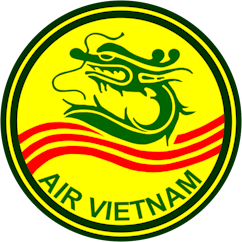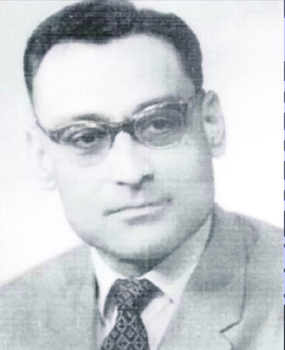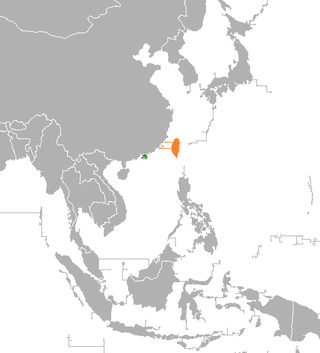
Zhou Enlai was a Chinese statesman, diplomat, and revolutionary who served as the first Premier of the People's Republic of China from September 1954 until his death in January 1976. Zhou served under Chairman Mao Zedong and aided the Communist Party in rising to power, later helping consolidate its control, form its foreign policy, and develop the Chinese economy.

Wang Zhaoming, widely known by his pen name Wang Jingwei, was a Chinese politician who was president of the Reorganized National Government of the Republic of China, a puppet state of Japan. He was initially a member of the left wing of the Kuomintang, leading a government in Wuhan in opposition to the right-wing government in Nanjing, but later became increasingly anti-communist after his efforts to collaborate with the Chinese Communist Party ended in political failure.

An aviation accident is defined by the Convention on International Civil Aviation Annex 13 as an occurrence associated with the operation of an aircraft, which takes place from the time any person boards the aircraft with the intention of flight until all such persons have disembarked, and in which (a) a person is fatally or seriously injured, (b) the aircraft sustains significant damage or structural failure, or (c) the aircraft goes missing or becomes completely inaccessible. Annex 13 defines an aviation incident as an occurrence, other than an accident, associated with the operation of an aircraft that affects or could affect the safety of operation.

The Bojinka plot was a large-scale, three-phase terrorist attack planned by Ramzi Yousef and Khalid Sheikh Mohammed for January 1995. They planned to assassinate Pope John Paul II; blow up 11 airliners in flight from Asia to the United States, with the goal of killing approximately 4,000 passengers and shutting down air travel around the world; and crash a plane into the headquarters of the United States Central Intelligence Agency (CIA) in Fairfax County, Virginia.

China Airlines Flight 611 was a regularly scheduled passenger flight from Chiang Kai-shek International Airport in Taiwan to Hong Kong International Airport in Hong Kong.

The First Taiwan Strait Crisis was a brief armed conflict between the People's Republic of China (PRC) and the Republic of China (ROC) in Taiwan. The conflict focused on several groups of islands in the Taiwan Strait that were held by the ROC but were located only a few miles from mainland China.

Cross-Strait relations are the relations between China and Taiwan.

Active from 1951 to 1975, Air Viet Nam was South Vietnam's first commercial air carrier, headquartered in District 1, Saigon. Established under a decree by Chief of State Bảo Đại, the airline flew over two million passengers, throughout the Vietnam War, and until its collapse due to the Fall of Saigon.

Rameshwar Nath Kao was an Indian spymaster and the first chief of India's external intelligence agency, the Research and Analysis Wing (R&AW) from its founding in 1968 to 1977. Kao was one of India's foremost intelligence officers, and helped build R&AW.

Zhōu is a Chinese-language surname. In places which use the Wade–Giles romanization such as Taiwan, Zhou is usually spelled as "Chou" (ㄓㄡ), and it may also be spelled as "Chiau", "Chau", "Chao", "Chew", "Chow", "Chiu", "Cho", "Chu", "Jhou", "Jou", "Djou", "Jue", "Jow", or "Joe". Zhou ranks as the 10th most common surname in Mainland China as of 2019. In 2013 it was found to be the 10th most common name, shared by 25,200,000 people or 1.900% of the population, with the province with the most being Hunan. Derived from the Zhou dynasty, it has been one of the ten most common surnames in China since the Yuan dynasty. It is the 5th name on the Hundred Family Surnames poem. The Korean surname, "Joo" or "Ju", and The Vietnamese surname, "Châu" or "Chu", are both derived from and written with the same Chinese character (周). The character also means "around". Zhōu also stands for other, rare Chinese family names, 舟, 州,and 洲.

Liao Chengzhi was a Chinese politician. He joined the Communist Party of China in 1928, and rose to the position of director of the Xinhua News Agency; after 1949, he worked in various positions related to foreign affairs, most prominently president of the Beijing Foreign Languages Institute, president of the Sino-Japanese Friendship Society, and Minister of the Office of Overseas Chinese Affairs.

On 2 October 1990, a hijacked Boeing 737, operating Xiamen Airlines Flight 8301, collided with two other aircraft on the runways of the old Guangzhou Baiyun International Airport while attempting to land. The hijacked aircraft struck parked China Southwest Airlines Flight 4305 first, inflicting only minor damage, but then collided with China Southern Airlines Flight 3523, a Boeing 757 waiting to take off, flipping onto its back. A total of 128 people were killed, including seven of nine crew members and 75 of 93 passengers on Flight 8301 and 46 of 110 passengers on Flight 3523.
Below is a list of speculated CIA activities in India.
Events in the year 1949 in China.

The Lin Biao incident was a plane crash at 3 a.m. on 13 September 1971 involving Lin Biao, the Vice Chairman of the Chinese Communist Party. Everyone on the plane, including Lin and several members of his family, died when the aircraft impacted Mongolian terrain. Lin Biao was allegedly attempting to defect to the Soviet Union after a failed plot to assassinate Mao Zedong. Following Lin's death, there has been widespread skepticism in the West concerning the official Chinese explanation, while forensic investigation conducted by the USSR, who recovered the bodies following the crash, has confirmed that Lin was among those who died in the crash.

Fang Chih or Fang Zhi, courtesy name: Xikong (希孔), was a politician, provincial governor, diplomat, author and a high-ranking Kuomintang official of the Republic of China.

Relations between the government of Hong Kong and the Republic of China (Taiwan) encompass both when the Republic of China controlled mainland China, and afterwards, when the Republic of China fled to Taiwan.

Li Qiang was a Chinese Communist revolutionary, military engineer, secret agent, radio scientist, diplomat, and politician. He served as the 2nd Minister of Foreign Trade of China from November 1973 to September 1981, and was elected an academician of the Chinese Academy of Sciences in 1955.

The East River Column or Dongjiang Column was a unit of anti-Japanese Communist guerrillas that operated in Guangdong and Hong Kong during the Second Sino-Japanese War. They played a major role in Chinese resistance against Japanese occupation, and remain an important part of local historical traditions about the war and the subsequent Communist Revolution. They are also notable outside of China for being the only Chinese Communist unit transported on US Navy vessels, done as part of the peace negotiations led by the Marshall Mission.

China Airlines Flight 825 was a scheduled China Airlines passenger flight from Taipei's Songshan Airport to Kai Tak Airport, Hong Kong. On 20 November 1971, a Sud Aviation SE-210 operating this route disintegrated in midair over the Penghu islands, killing all 25 onboard.


















